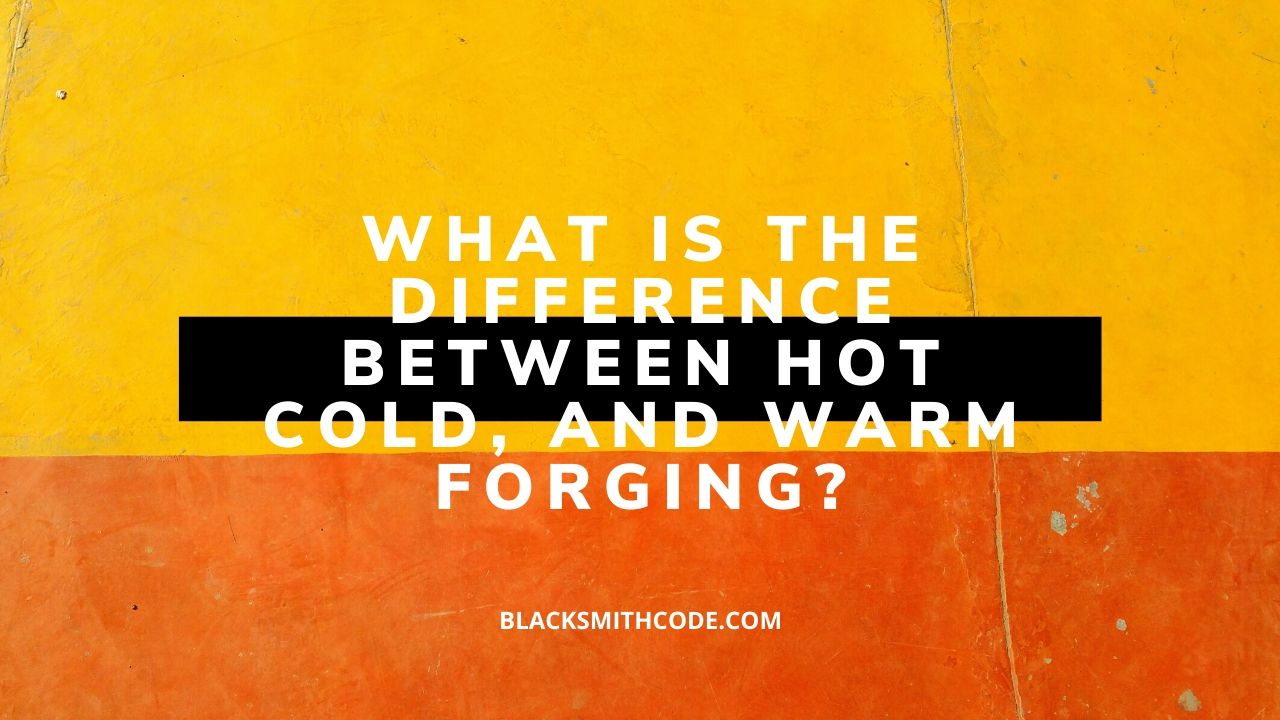To most people, forging is forging. But to blacksmiths and those that are familiar with blacksmithing processes, there are different types of forging. Forging occurs at different temperatures depending on the purpose.
Consequently, there are three types of forging which are warm, hot, and cold forging.
Hot Forging
One of the most significant things that highlight hot forging is the temperature at which the forging is done. Hot forging takes place at extremely high temperatures. These temperatures can also vary depending on the material you are working with for specific projects. The heat can be as high as 1150℃ for steel, 650-800℃ for copper alloys, and 360-520℃ for aluminum alloy.
This temperature often makes forging easy and allows you to form and work on complex geometries. Hot forging is arguably the most popular forging process among blacksmiths. It reduces the hardening effect of the metal and increases its malleability. However, a vital point to note about hot forging is that you need to control the atmosphere furnace. But its results makes it one of the most versatile types of forging.
Cold Forging
Cold forging is the opposite of hot forging. It is carried out at a temperature slightly above or slightly below the room temperature. For it to be considered a cold forge, the heat should be at least 30% less than the metal or steel’s recrystallization temperature.
However, before you proceed with cold forge, you must ensure that the metal has adequate flow properties to avoid the occurrence of cracks while shaping. These potential cracks are because of this type of forging process, the metal or steel is forced to flow to give you your desired shape.
Warm Forging
Warm forging forms the intermediate between hot forging and cold forging. It proceeds at a temperature that is above the general room temperature where cold forging takes place, but not as high or extreme to the level of hot forging.
The primary use of warm forging in blacksmithing is to create near tolerance constituents in steel alloys that are ordinarily not possible with the use of cold forging. Warm forging also allows you to work on materials that are not too suitable for cold or hot forging.
Significant Difference between Cold, Warm, and Hot Forging
The significant difference between hot, cold, and warm forging is the temperature they take place. While hot forging proceeds at extremely high temperatures, warm forging takes place at intermediate temperatures, depending on the components of the material, and cold forge takes place at near room temperature. Understanding the difference between the types of forging will help you through many processes.
Likewise, the aim of each forging process is different. While hot forging will make the metal, steels, or alloys highly malleable, and allow you to beat to any shape of your desire, cold forging will only slightly alter the shape or form. Warm forging will also enable you to work on the components on the materials, depending on the tolerance.
Conclusion
The temperature at which you carry out your forging will determine the forging processes. Warm, cold, and hot forging are all critical in blacksmithing. They perform different roles but come together to achieve the same aim, which is forging metal to give your desired shape or form.

